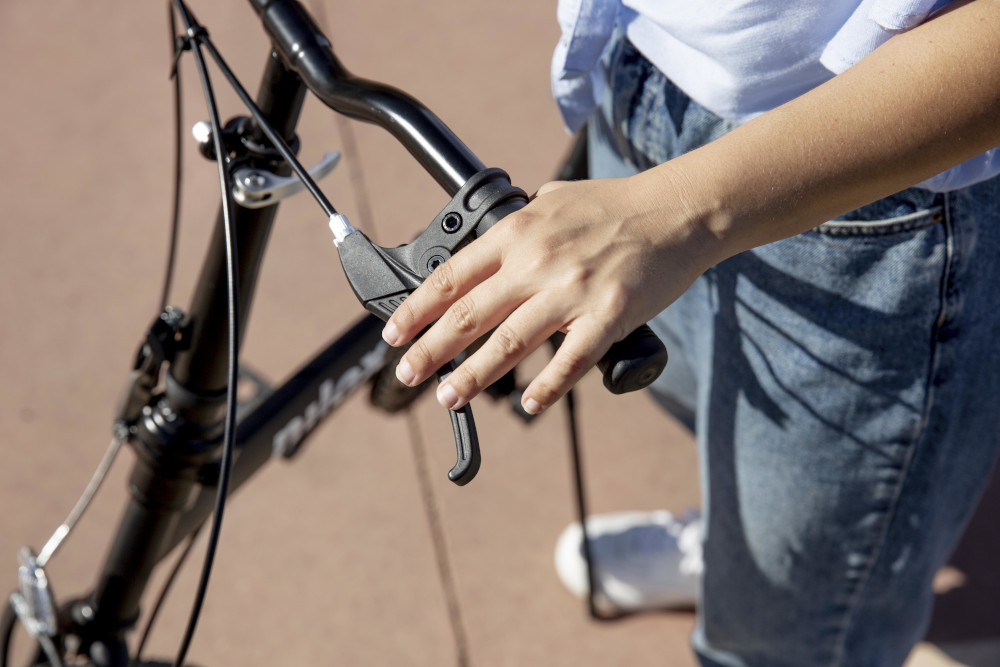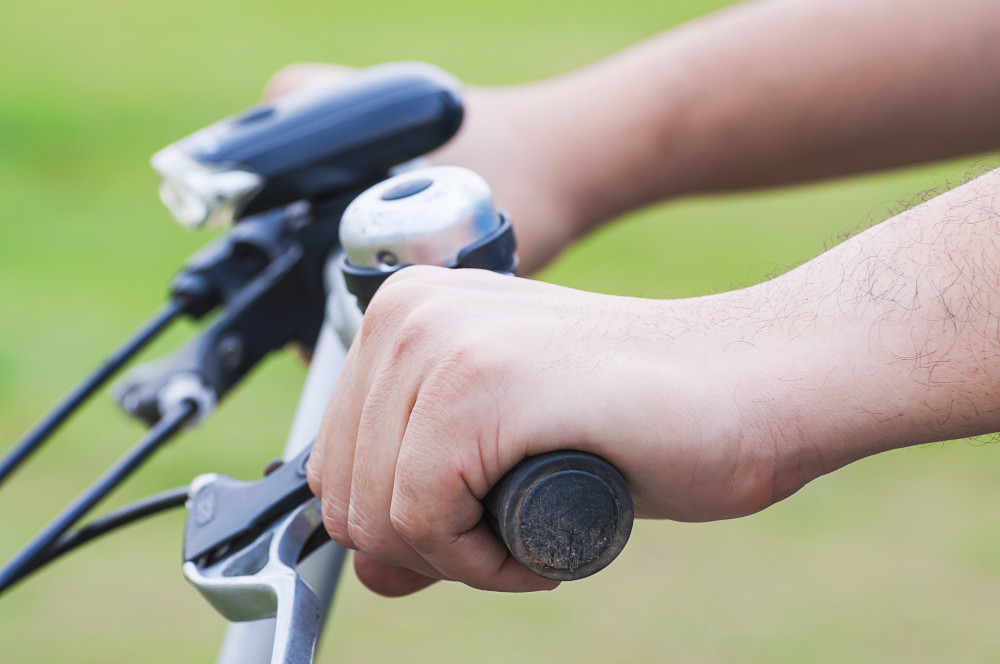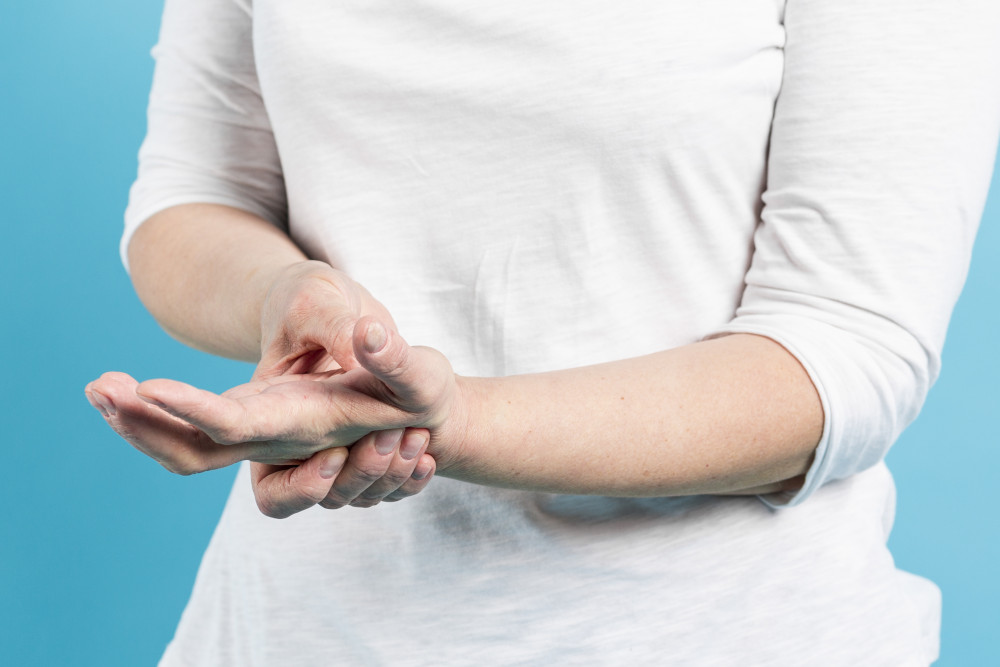Conquering Wrist Pain: Tips for Enjoying Mountain Biking to the Fullest
Mountain biking is an exhilarating and challenging sport that allows riders to explore nature and test their limits. However, one common issue that many mountain bikers face is wrist pain. In this article, we will provide valuable insights and practical tips to help you understand the causes of wrist pain while mountain biking, identify common symptoms, and prevent injuries. We will also discuss essential gear, proper bike fit, stretching and strengthening exercises, riding techniques, and the importance of rest and recovery. We will provide nutrition and hydration tips to support healthy joints and guide you on when to seek medical attention. By following these guidelines, you can maintain long-term wrist health and fully enjoy the thrill of mountain biking.
Mountain biking is a thrilling sport that allows riders to explore the great outdoors and push their physical limits. However, like any sport, it comes with its own set of challenges and potential injuries. One common issue that many mountain bikers face is wrist pain. This can be a debilitating condition that not only affects a rider’s performance but also their overall enjoyment of the sport. In this article, we will explore the causes of wrist pain in mountain biking, common symptoms to look out for, and strategies to prevent and alleviate wrist pain.
Addressing wrist pain in mountain biking is important for several reasons. Wrist pain can significantly impact a rider’s ability to control their bike and navigate through challenging terrain. This can lead to accidents and injuries. Also, chronic wrist pain can have long-term consequences on a rider’s overall joint health and mobility. By addressing mountain biking wrist pain early on and implementing preventive measures, riders can ensure that they can continue enjoying the sport for years to come.
Key Takeaways
- Wrist pain in mountain biking can be caused by overuse, poor bike fit, and improper technique.
- Common symptoms of mountain biking wrist pain include numbness, tingling, and weakness in the hands and wrists.
- Essential gear to prevent wrist pain includes gloves with padding and wrist braces.
- Proper bike fit can alleviate wrist pain by reducing pressure on the wrists and distributing weight evenly.
- Stretching and strengthening exercises, as well as modifying riding techniques, can help reduce mountain biking wrist pain.

Understanding the Causes of Wrist Pain in Mountain Biking
Several factors contribute to wrist pain in mountain biking. One of the main causes is the repetitive stress placed on the wrists during rides. The constant jarring and impact from rough terrain can strain the muscles, tendons, and ligaments in the wrists, leading to inflammation and pain. Improper bike fit can also contribute to wrist pain. If the handlebars are too low or too far forward, it can put excessive pressure on the wrists and lead to discomfort.
Another factor that contributes to mountain biking wrist pain is poor riding technique. Gripping the handlebars too tightly or using improper hand positioning can strain the wrists and lead to pain over time. Lack of strength and flexibility in the wrists can also make them more susceptible to injury. Weak muscles and tight tendons can’t absorb shock as effectively, leading to increased stress on the wrists.
Common Symptoms of Wrist Pain and How to Identify Them
Mountain bikers need to be able to identify the common symptoms of wrist pain to address the issue promptly. Some common symptoms include pain or discomfort in the wrists, especially during or after rides. This pain may be sharp or dull and can range from mild to severe. Swelling and inflammation in the wrists are also common symptoms. In some cases, riders may experience a loss of grip strength or difficulty performing everyday tasks that require wrist movement.
To identify these symptoms, riders should pay close attention to any discomfort or pain they feel in their wrists during or after rides. It’s important not to ignore these symptoms, as they can worsen over time if left untreated. If riders notice any swelling, redness, or persistent pain in their wrists, it’s advisable to seek medical attention for a proper diagnosis and treatment plan.
Essential Gear to Help Prevent Mountain Biking Wrist Pain

Several pieces of gear can help prevent wrist pain in mountain biking. One critical piece of gear is a pair of padded gloves. These gloves provide cushioning and support for the wrists, reducing the impact and strain placed on them during rides. Look for gloves with gel padding or foam inserts specifically designed to absorb shock and reduce pressure on the wrists.
Another piece of gear that can help prevent wrist pain is a handlebar grip with ergonomic design features. These grips are designed to reduce pressure points on the hands and wrists, promoting a more natural and comfortable hand position. Look for grips with built-in padding or gel inserts for added comfort.
Wrist braces or supports can provide extra stability and support for riders experiencing wrist pain. These braces can help alleviate discomfort and prevent further injury by limiting excessive movement and providing compression to reduce inflammation.
Proper Bike Fit and How It Can Alleviate Wrist Pain
Proper bike fit alleviates wrist pain in mountain biking. A bike that is not properly fitted to a rider’s body can put unnecessary strain on the wrists and lead to discomfort. When it comes to bike fit, there are several key areas to consider.
Firstly, handlebar height and position play a significant role in wrist health. The handlebars should be positioned at a height that allows the rider to maintain a natural and relaxed hand position. If the handlebars are too low, it can put excessive pressure on the wrists. On the other hand, if the handlebars are too high, it can cause the rider to lean too far back, putting strain on the wrists.
Secondly, handlebar width is also important for proper bike fit. The handlebars should be wide enough to allow for comfortable hand placement without excessive strain on the wrists. Riders should be able to comfortably grip the handlebars without their hands feeling cramped or stretched.
Finally, brake lever positioning is another important aspect of bike fit. The brake levers should be positioned in a way that allows riders to comfortably reach them without straining their wrists. Adjusting the angle and position of the brake levers can make a significant difference in wrist comfort.
By ensuring that their bike is properly fitted to their body, riders can alleviate wrist pain and prevent further injury.
Stretching and Strengthening Exercises for Wrist Pain
Stretching and strengthening exercises can be highly effective in alleviating wrist pain in mountain biking. These exercises help improve flexibility and strength in the wrists, making them more resilient to stress and reducing the risk of injury.
One effective stretching exercise for the wrists is wrist flexion and extension stretches. To perform this exercise, extend one arm in front of you with your palm facing down. Use your other hand to gently pull your fingers towards your body until you feel a stretch in your wrist. Hold this stretch for 15-30 seconds and then release. Repeat on the other side.
Another stretching exercise is wrist rotations. Extend one arm in front of you with your palm facing up. Use your other hand to gently rotate your wrist in a circular motion, first clockwise and then counterclockwise. Repeat on the other side.
Strengthening exercises can also help support mountain biking wrist pain. One effective exercise is wrist curls. Hold a light dumbbell or resistance band in your hand with your palm facing up. Slowly curl your wrist upwards towards your body, then lower it back down. Repeat this motion for 10-15 repetitions and then switch to the other hand.
Another strengthening exercise is wrist extensions. Hold a light dumbbell or resistance band in your hand with your palm facing down. Slowly extend your wrist downwards away from your body, then bring it back up. Repeat this motion for 10-15 repetitions and then switch to the other hand.
By incorporating these stretching and strengthening exercises into their routine, riders can improve wrist flexibility and strength, reducing the risk of pain and injury.
How to Modify Your Riding Technique to Reduce Wrist Pain
Modifying riding techniques can also be effective in reducing wrist pain in mountain biking. By making small adjustments to their technique, riders can alleviate strain on the wrists and promote a more comfortable riding experience.
One important modification is to loosen the grip on the handlebars. Many riders tend to grip the handlebars tightly, especially during challenging sections of a trail. However, this can put excessive strain on the wrists and lead to discomfort. Instead, riders should aim for a relaxed grip that allows for some movement and flexibility in the wrists.
Another modification is to focus on proper hand positioning. The hands should be positioned evenly on the handlebars, with the weight distributed between the palms and fingers. This helps distribute pressure more evenly across the wrists and reduces strain.
Riders should aim to absorb shock with their legs and core rather than relying solely on their wrists. By bending the knees and using the legs as shock absorbers, riders can reduce the impact on their wrists and prevent excessive strain.
By making these modifications to their riding technique, riders can reduce wrist pain and enjoy a more comfortable and enjoyable ride.
The Importance of Rest and Recovery for Wrist Pain
Rest and recovery are crucial for addressing wrist pain in mountain biking. When the wrists are overworked or injured, it’s important to give them time to heal and recover. Continuing to ride with wrist pain can exacerbate the issue and lead to further injury.
If riders experience wrist pain, it’s important to take a break from riding and allow the wrists to rest. This means avoiding activities that put a strain on the wrists, such as lifting heavy objects or performing repetitive motions. Instead, focus on gentle stretching exercises and low-impact activities that promote blood flow and healing.
Applying ice or cold packs to the wrists can help reduce inflammation and alleviate pain. Ice should be applied for 15-20 minutes at a time, several times a day. This can help reduce swelling and promote healing.
It’s also important to listen to your body and not push through pain. If the wrists are still experiencing discomfort after a period of rest, it may be necessary to seek medical attention for a proper diagnosis and treatment plan.
Nutrition and Hydration Tips to Support Healthy Joints
Proper nutrition and hydration are important for supporting healthy joints, including the wrists. By fueling the body with the right nutrients, riders can promote joint health and reduce the risk of inflammation and pain.
One important nutrient for joint health is omega-3 fatty acids. These healthy fats have anti-inflammatory properties that can help reduce inflammation in the joints, including the wrists. Foods rich in omega-3 fatty acids include fatty fish like salmon, mackerel, and sardines, as well as flaxseeds, chia seeds, and walnuts.
Another important nutrient is vitamin C. This vitamin helps produce collagen, a protein that helps maintain the integrity of joints and connective tissues. Foods rich in vitamin C include citrus fruits, strawberries, bell peppers, and broccoli.
Staying hydrated helps keep your joints healthy. Water helps lubricate the joints and keep them functioning properly. Aim to drink at least 8 glasses of water per day, or more if you’re engaging in intense physical activity.
By incorporating these nutrition and hydration tips into their diet, riders can support healthy joints and reduce the risk of wrist pain.
When to Seek Medical Attention for Wrist Pain
While many cases of wrist pain can be alleviated with rest, stretching, and proper bike fit, there are instances where medical attention may be necessary. If riders experience severe or persistent wrist pain that does not improve with rest and self-care measures, it’s important to seek medical attention.
If there are signs of a more serious injury, such as a fracture or ligament tear, medical attention should be sought immediately. Signs of a more serious injury include severe pain, swelling that does not improve with rest and ice, inability to move the wrist or perform everyday tasks, or visible deformity in the wrist.
A healthcare professional will be able to properly diagnose the issue and recommend appropriate treatment options. This may include physical therapy, occupational therapy, medication for pain management, or in some cases, surgery.

Strategies for Maintaining Long-Term Wrist Health in Mountain Biking
Maintaining long-term wrist health in mountain biking requires a combination of preventive measures and self-care strategies. By implementing these strategies into their routine, riders can reduce the risk of wrist pain and enjoy the sport for years to come.
One important strategy is to prioritize proper bike fit. Ensuring that the bike is properly fitted to the rider’s body can significantly reduce strain on the wrists and prevent discomfort. Regularly check and adjust handlebar height, width, and brake lever positioning to ensure optimal fit.
Another strategy is to incorporate regular stretching and strengthening exercises into the routine. By improving flexibility and strength in the wrists, riders can make them more resilient to stress and reduce the risk of injury. Aim to perform these exercises at least a few times a week, even when not experiencing pain.
It’s important to listen to your body and take breaks when needed. If you start experiencing wrist pain during a ride, take a break and allow your wrists to rest. Pushing through pain can lead to further injury and prolong recovery time.
Maintaining overall joint health through proper nutrition and hydration is important for long-term wrist health. By fueling the body with the right nutrients and staying hydrated, riders can support healthy joints and reduce the risk of inflammation and pain.
Addressing wrist pain in mountain biking helps you maintain performance, prevent injuries, and ensure long-term joint health. By understanding the causes of wrist pain, identifying common symptoms, and implementing preventive measures, riders can enjoy the sport without discomfort or limitations. Proper bike fit, stretching and strengthening exercises, modifications to riding technique, rest and recovery, nutrition and hydration, knowing when to seek medical attention, and maintaining long-term wrist health are all important strategies for addressing wrist pain in mountain biking. By prioritizing wrist health, riders can continue to enjoy the thrill of mountain biking for years to come. Your first step toward healing and feeling better is to schedule an appointment for a professional evaluation. Schedule an appointment today – complete and submit the request form by the link: https://sportscare-armworks.com/request-an-appointment/. Choose the preferred service and location in the Portland area. If you contact us after business hours, we will get back to you the next business day. We look forward to hearing from you!



